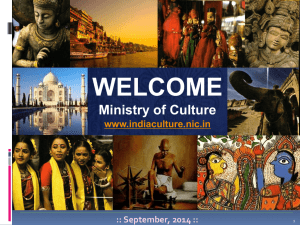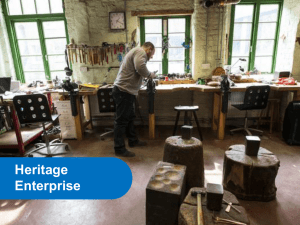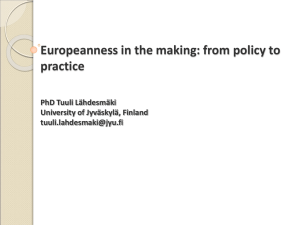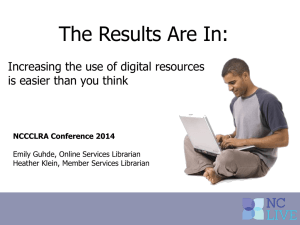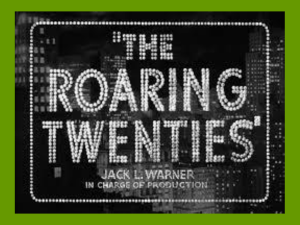community - Ontario Library Service
advertisement
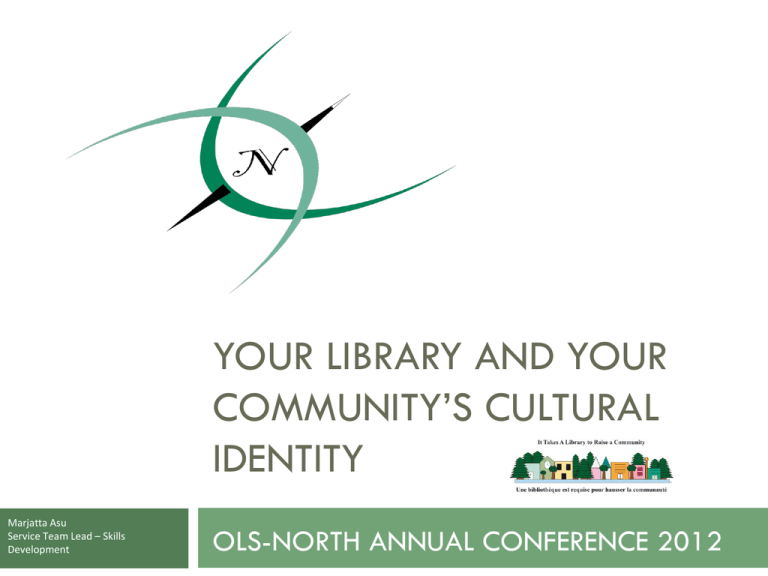
YOUR LIBRARY AND YOUR COMMUNITY’S CULTURAL IDENTITY Marjatta Asu Service Team Lead – Skills Development OLS-NORTH ANNUAL CONFERENCE 2012 The role of public libraries UNESCO and IFLA Public Library Manifesto: “The public library, the local gateway to knowledge, provides a basic condition for lifelong learning, independent decision-making and cultural development of the individual and social groups.” Belief in the public library as a living force for education, culture and information, and An essential agent for the fostering of peace and spiritual welfare through the minds of men and women 1 UNESCO, UNCESO/IFLA Library Manifestos, http://www.unesco.org/webworld/libraries/manifestos.html What is culture? The 3 V’s of Culture Meaning Channel Values Identity, customs, memories, stories, standards, beliefs Celebrations, festivals, museums, libraries, art and heritage collections Vibe Buzz, the culture that pours out into the street Shops, stores, restaurants, cafes, clubs, pubs, architecture, public spaces (e.g., parks) Expression of artistic excellence and appreciation of artistic merit Music, drama, dance, visual arts, craft, sculpture, design, movies, books, poems, stories and new media Virtuosity City of Mississauga’s cultural plan, 2009 What are libraries doing? Language Northern Ontario English, French, Ojibway, Cree, OjiCree Toronto Public Library Online language learning products Newcomer workshops ESL classes and reading circles Canadian Cultural Café Nipissing First Nation Public Library Partners with community’s Language Committee Nbisiing Anishnaabemwin Language Camp Nbisiing Traditional Knowledge Revitalization Project: A Cultural Plan for Nipissing First Nation What are libraries doing? Arts Powassan and District Union Public Library Powassan Art Group Enever Room Meet, paint and learn Community workshops Downstairs Gallery Toronto Public Library Museum + Art Pass (MAP) Sun Life Financial partnership Free passes to arts and cultural institutions What are libraries doing? Heritage Schreiber Public Library Heritage mural (125th) Community quilt Cemetery tour brochure Schreiber heritage brochure Along the Track Multi-library heritage project Municipal Cultural Planning (MCP) “The strategic and integrated planning and use of cultural resources for economic and community development.” Community assets and their benefits Municipalities and First Nation communities began integrating cultural planning (2003) The library’s place at the table Municipal Cultural Planning http://www.ontariomcp.ca/ Municipal cultural mapping Two types of cultural mapping 1. Asset mapping Identifies and records tangible cultural resources often using Geographic Information Systems (GIS) Community identity mapping 2. Explores intangible cultural resources Stories, traditions, ‘sense of place’ Municipal cultural mapping (examples) Libraries & archives Radio and TV Theatre Publishing Graphic designers County fairs Film festivals Multicultural festivals Public art tours Creative cultural industries Festivals & events Archaeological sites Aboriginal heritage sites Historic sites Heritage districts Natural heritage Cultural assets (resources) Cultural heritage Parks Farms & orchards Conservation authorities Natural history site Spaces & facilities Community cultural resources Digital & media studios Libraries & archives Theaters Performing arts Community arts Historical societies Multicultural Aboriginal http://mappingauthenticity.com/work/resources/concepts/cultural-mapping/ Cultural map and directory Perth County, http://www.perthartsconnect.ca/pdfs/PAC_Directory_DF.pdf Cultural map and directory Cultural Mapping, http://wawaculture.com/cultural-mapping/ Cultural resource inventory A crucial step in the municipal cultural planning process A list of the community’s cultural resources Includes organizations, people, buildings, land, etc. Don’t have one? Good role for the library? Supports a range of activities: Policy development and planning for community Identify internal infrastructure (arts, culture, heritage and other aspects of the life of the community) Resource allocation (e.g., funding to institutions, organizations and individuals) Marketing and promotion Cultural resource inventory London, Cultural Resource Mapping and Asset Inventory: the framework http://www.london.ca/d.aspx?s=/Cultural_Prosperity/culturemapping.htm Innovative cultural resources map http://www.cultureonthemap.ca/mapcms/com/index.html Planning cycle 1. Planning to plan 7. Evaluate outcomes/ results 2. Establish goals 3. External scan (community) 6. Establish strategies Work with Cultural Planning Committee 5. Establish library priorities 4. Internal scan (library) Cultural planning process City of Nanaimo’s New Cultural Plan http://www.nanaimo.ca/EN/main/departments/parks-recreation-culture/Culture.html Environmental scan External scan (community) Cultural level of interest Hidden cultural resources Cultural needs not currently met Internal scan (library) Library’s cultural strengths and weaknesses What is library doing or what could it be doing to meet community’s cultural needs? Toolkit: 1. Sample survey 2. Library scan checklist External: Community cultural survey 1. 2. 3. 4. Who are the cultural leaders in your community? Name 5 cultural organizations in your community Can you name some cultural events that have taken place in your community in the past 5 years? Is your library a cultural organization? Internal: Library scan checklist Public arts displays Arts meeting space Access to local history Cultural programs Language resources Hosting language classes Writing workshops Municipal cultural planning and mapping Partnership with museums and galleries Partner with local history/ genealogical groups Community festivals and events Access to genealogical resources Local authors and poets Cultural resources inventory Partnership development strategies 1. 2. 3. 4. 5. 6. 7. Research the organization Identify what the library has to offer Clarify what it is the library needs and expects from a partner Establish a working relationship Identify type of partnership Build the relationship Don’t get discouraged Partnership Tool Kit: Assisting Northern Ontario’s Public Libraries in Initiating Community Partnerships. OLS-North, 2007 Creative Communities Prosperity Fund (CCPF) Objective of funding 1. 2. 3. Assist municipalities and First Nation communities develop cultural resources and integrate cultural planning Support the creation of tools and initiatives Encourage partnerships and models Northern examples Atikokan Dryden Nipissing First Nation Wawa New program 2013 http://www.grants.gov.on.ca/GrantsPortal/en/OntarioGrants/ GrantOpportunities/OSAPQA005128 Tips for successful cultural planning 1. 2. 3. 4. 5. Focus on assets not needs Mobilize and empower community leaders and champions Make sure everyone is on the same page Engage all sectors of the community Be inclusive Resources Your Library and Your Community’s Cultural Identity: Community Development Toolkit #3, OLS-North 2011 Mississauga Culture on the Map http://www.mississauga.ca/portal/discover/culturalmapping Municipal Cultural Planning http://www.ontariomcp.ca/ Creative Communities Prosperity Fund http://www.grants.gov.on.ca/GrantsPortal/en/OntarioGrants /GrantOpportunities/OSAPQA005128 What is your library doing? Capacity Building Team Ontario Library Service – North marketing@olsn.ca 1-800-461-6348 ext. 507

